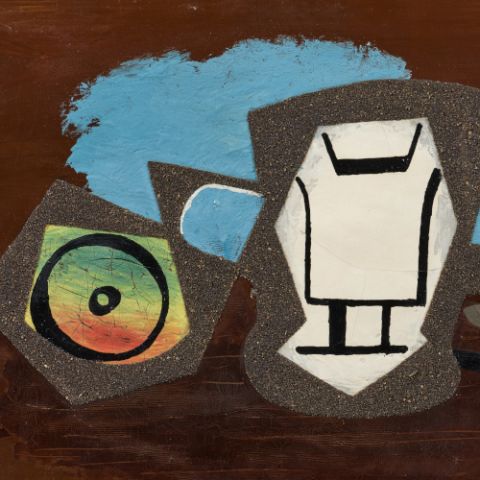
Lot 9 | Georg Kolbe | Flora
1877 Waldheim/Saxony - 1947 Berlin
Title: Flora.
Date: 1939 (draft).
Technique: Bronze, goldish-brown-patinated.
Measurement: 72 x 28 x 17,5cm.
Notation: Monogrammed on the plinth behind the right foot: GK (artist's signet).
Foundry Mark: Foundry stamp at the back edge of the plinth: H.NOACK BERLIN.
The work stems from one edition of three casts during the artist's life time.
For this work an expertise by Mrs Dr. Ursel Berger, Berlin, from 21st January, 2018, is available in copy.
Provenienze:
- Private collection Küpper
- Private collection North Rhine-Westphalia
Literature:
- Berger, Ursel: Georg Kolbe - Leben und Werk. With catalogue of the Kolbe-plastics at the Georg-Kolbe-Museum, Berlin 1990, cat. no. 175, ill.
-Georg Kolbe is one of the most important sculptors of the 20th century
-His nude sculptures are inspired by the figure ideal of antiquity and at the same time an expression of his intensive preoccupation with the depiction of modern man
-Sculpture of extreme rarity
-Excellent casting with beautiful patina
-Small version of a larger-than-life female figure for the 'Ring of Statues' in the Rothschild Park in Frankfurt am Main
In harmony with body and soul
Although Georg Kolbe was already playing around with small animal sculptures made of beeswax at the age of ten, during his artistic training he devoted himself to painting and drawing, first at the School of Applied Arts in Dresden, then at the Academy in Munich and finally at the Académie Julian in Paris. It was only after a stay in Rome that he found his calling as a sculptor in 1900. His artistic breakthrough came in 1911 with his ‘Dancer’, which gave sensual expression to the prevailing spirit of optimism of his time.
Kolbe's work is guided by the pursuit of a form whose essence lies in the harmony of body and mind. Influenced by the authentic physicality of Auguste Rodin's sculptures and by modern dance, Kolbe uses the term ‘expressive sculpture’ for his art, which - always oriented towards nature - is dedicated to the mostly naked body in space: the inner movement of the human being is to be transferred unadulterated into an external form. By eliminating the covers, the superfluous folds of clothing and the ornamentation, the dusty ideals of the imperial era are discarded and a new image of humanity is shaped. The mannered, sweet and rigid gives way to a body-emphasised aesthetic feeling that corresponds to the modern, free citizen.
Flora
The proud, naked female figure of Flora stands expressively erect in a relaxed contrapposto pose, her left leg straight and her foot firmly anchored in the ground, her right leg bent and her toes resting on a stone.
Everything about this figure is subordinate to the natural grace of the figure: no accessory has been added to enable identification of the sitter. The ancient goddess Flora represents vegetation and fertility; her appearance embodies flowers and plants, as well as soil, grain and agriculture. In allegorical depictions of the four seasons, Flora represents spring; the burgeoning plant world is also associated with youth and pregnancy. Contrary to the usual depiction of a young woman adorned with flowers or blossoms, Kolbe's Flora does not appear as an ethereal spirit. Rather, she is given a prominent physical presence and thus significance solely through the pure power of her stately body. She dispenses with any ornamental addition; her sublime figure alone identifies her as a goddess in the flesh - a goddess who is human through and through. No garment, no attribute distracts from the harmoniously balanced proportions, from the relaxed movement of her limbs. Following the formal language of an ancient ideal of the body, Kolbe emphasises instead the powerfully tensed, pronounced play of muscles in the thighs and calves, which he models with the utmost sensitivity.
Kolbe's naturalistic rendering of the body is not so much intended to document anatomy as to express his interest in the vital character and dynamic aura of his figures, which goes beyond smooth surfaces and static statuary. To capture this liveliness, Kolbe prefers bronze. The golden-brown shimmer of the material allows him to give the surface structure of his sculptures particularly vivid effects.
Bettina Haiss
| Recommend lot |
Conditions of this Lot
32% buyer’s premium on the hammer price
Estimated shipping costs for this lot:
Arrangement after the auction.
Georg Kolbe Germany Berlin Secession Modern Art Sculptures 1930s Nude Object Bronze Woman






